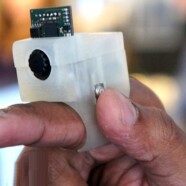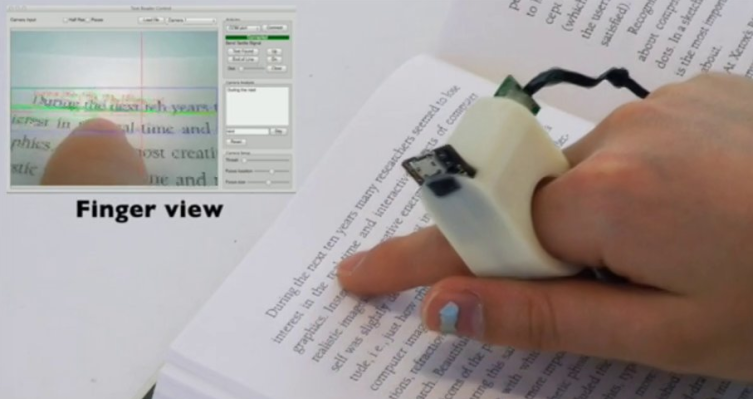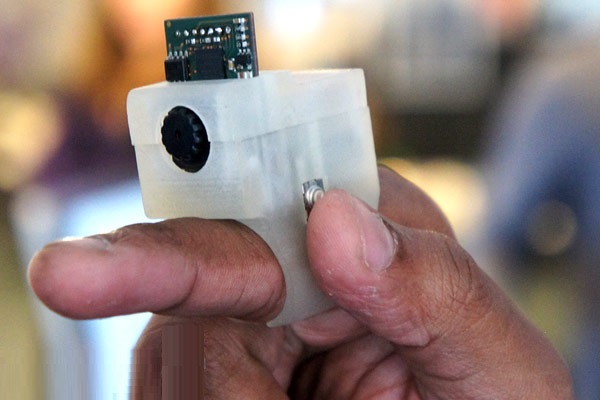FingerReader Helps The Blind Read
MIT’s FingerReader Helps The Blind Read With A Swipe Of A Digit
At MIT’s Media Labs, researchers Roy Shilkrot, Jochen Huber and others are working on the “FingerReader,” a ring-like device that straps itself around your finger and reads printed text out loud with a synthesized voice, thanks to a mounted camera and heavily modified open source software.
The FingerReader’s voice is clipped and metallic – what one might liken to a Berlitz tape speaking through clenched teeth – but it is something the Finger Reader team is aware of and is working on, amongst many other things. The device itself is plasticine and upon first-hand inspection, weighs no more than a regular ring. To hear the words read aloud, simply point your finger at the text you wish to read. It’s possible thanks to a small camera mounted on the ring.
It doesn’t work with text as small as, say, on a medicine bottle or baseball box scores, but it can read 12-point printed text, the on-screen computer component shown in the video above highlighting each word to the sound of what Shilkrot described as “bings and beeps.” Stray too far from a line, and a dial tone-like noise increases. Remain on the line of text and you can hear it. And though – as a whole – the FingerReader sounds like a ‘Reading Pen,’ Huber and Shilkrot differentiate it from the Reading Pen, noting that it gives real time feedback, whereas the Reading Pen does not, and that their software can read a whole line of text, and not one word at a time, as is the case with a Reading Pen.
In an interview, Shilkrot, a Ph.D student, said he didn’t envision the final version of the ‘Finger Reader’ to be only for people with sight difficulties. He said it was for people with “disability, ability, and superability,” and suggested a scenario in which the Finger Reader translated text in another language. He said it was worth noting that the blind and visually impaired liked using devices that weren’t built just for them. He also pointed towards a study conducted by the Royal National Institute of the Blind in Britain that noted in 2011 that “only seven per cent of books are available in large print, unabridged audio and braille, including titles available in these formats as eBooks,” noting that an easy-to-use device would open up a lot of heretofore unread texts.
Though there is no immediate plan to take FingerReader to market, Shilkrot is “aware of the costs of devices these days. [Even so], we still can’t say how much the FingerReader will cost as a consumer product. The technology is still evolving around miniaturization, stand-alone wireless operation, tethering to a PC or smartphone.”



